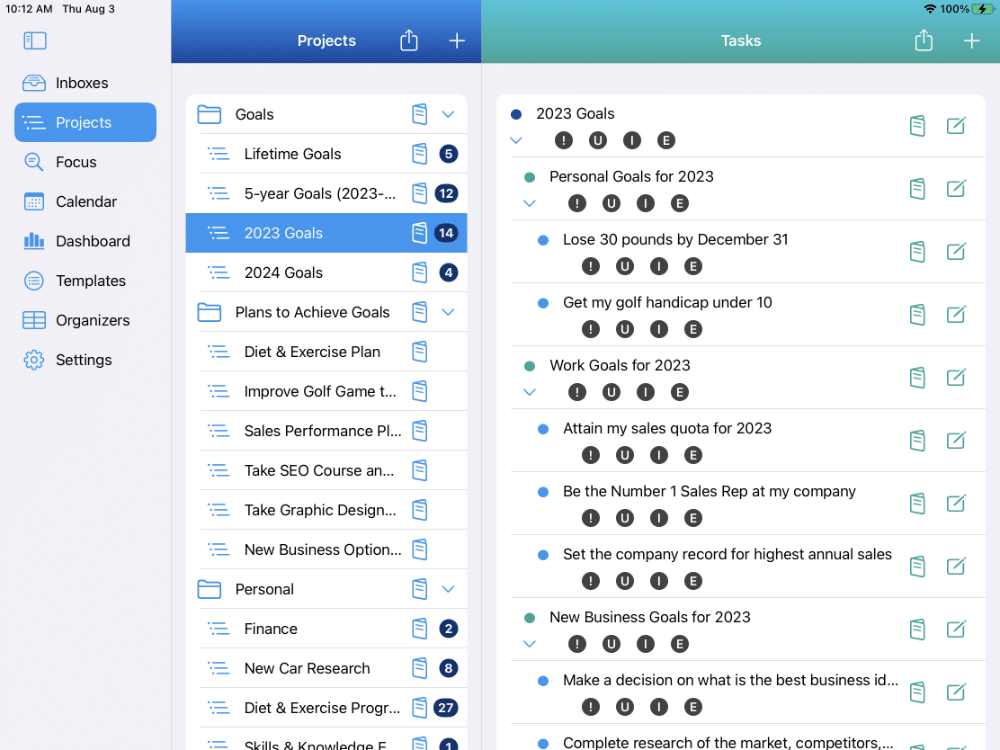How Effective Planning Can Help You Achieve Your Goals
Planning
Unleashing Your Potential: How Effective Planning Can Help You Achieve Your Goals
“A goal without a plan is just a wish.”
– Antoine de Saint-Exupéry
Are you ready to unlock your full potential and achieve your goals?
Effective planning is the key to turning your dreams into reality. Once you set your goals, start by outlining a clear roadmap using carefully thought-out plans. Then, with purposeful actions laid out in your plan, you can create a path toward success and fulfillment.
On this page, we will explore how effective planning can help you unleash your potential and make significant progress in all areas of your life. Whether your aim is career advancement, financial stability, or personal growth, a well-thought-out plan is essential. It provides you with clarity, focus, and direction, enabling you to stay motivated and track your progress along the way.
Personal planning sets the stage for success, from setting realistic and measurable goals to implementing strategies that align with your values and strengths. Join us as we delve into the power of effective planning and discover practical tips and strategies to help you reach your goals.
“If you don’t know where you are going, you’ll end up someplace else.”
– Yogi Berra
Don’t settle for the same ol’ same ol’. It’s time to take control of your life and unleash your true potential through effective personal planning. Let’s get started!
What Is Planning?
Get what you want out of life — by design
At its heart, planning is the process of setting goals and determining the best way to achieve them. It’s a roadmap for where you want to go and how you intend to get there. It’s a key component of personal and professional success.
The beauty of planning lies in its flexibility. It’s not rigid or set in stone. Instead, it’s a dynamic process that should be adaptable to changing circumstances and new information. Planning helps you stay focused, organized, and keeps you on track when life throws you curveballs.
“Planning is bringing the future into the present so that you can do something about it now.”
– Alan Lakein
Goal setting can be a fun exercise as well, as it puts you in charge, and allows you to think positively about what you’d like to achieve.
Understanding the Art of Planning
Planning, as a concept, may carry different interpretations based on context. However, in its essence, planning involves organizing and preparing for a particular task, project, or event or to achieve a particular aim. It’s a blueprint for your intended actions and outcomes.
According to Merriam-Webster’s dictionary, Planning is defined as “the act or process of making or carrying out plans; specifically: the establishment of goals, policies, and procedures for a social or economic unit.”
That’s a mouthful, right? Well, in simpler terms, planning is a systematic approach to achieving your goals. It involves identifying your objectives, determining the best way to achieve them, and then setting out a detailed plan of action.
So, whether it’s for your personal or professional life, planning can significantly boost your chances of success. Start leveraging this powerful process today and unleash your untapped potential!
The Importance of Planning in Achieving Your Goals
Unleashing Your Potential: How Effective Planning Can Help You Achieve Your Goals
Ever wonder why some people seem to sail smoothly towards their goals while others struggle? The secret isn’t magic, it’s planning. This vital tool acts as the rudder for your life’s ship, steering you towards your desired destination.
“The best way to predict the future is to create it.”
– Peter Drucker
Without a clear plan, we may drift aimlessly or even row in circles. We risk being pulled by life’s currents into uncharted waters of missed opportunities and unfulfilled potential. By contrast, effective planning sets a clear course and equips us with the right tools to reach our goals, no matter how big or small.
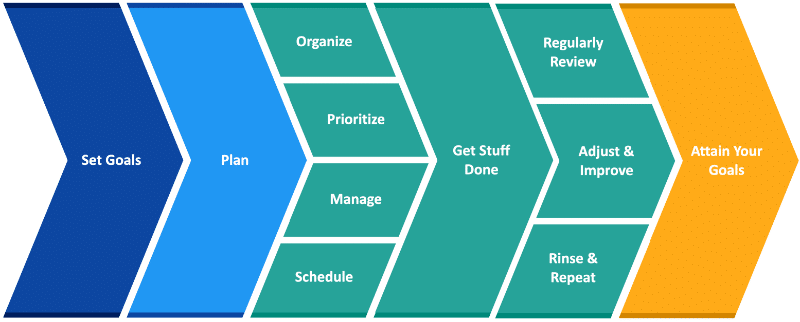
Investing time into planning is akin to planting a seed for success. It helps clarify our ambitions, identify the steps needed, and provide a tangible roadmap to our dreams. With a plan in hand, we’re better prepared to navigate life’s inevitable storms and keep our goals within sight, even when the waters get choppy.
The Advantages & Benefits of Planning
Unleashing Your Potential: How Effective Planning Can Help You Achieve Your Goals
At the heart of every success story is a carefully mapped out plan. It’s the silent architect that builds our dreams into realities.
Planning is like setting the stage for your success. It’s the secret sauce that many high-achievers use to reach their goals.
Effective personal planning is your tool for unlocking your fullest potential. It provides a structure that can guide you toward achieving your objectives, no matter how ambitious they may be. By clearly defining your goals and outlining the steps needed to reach them, you’re not just daydreaming about success – you’re actively working towards it. This approach ensures that you’re not aimlessly wandering but purposefully moving in the right direction.
Let’s explore the amazing advantages of effective personal planning and why it’s such a game-changer.
“This isn’t just about crossing off items from your to-do list. It’s about shaping your future, one strategic decision at a time.”
PROVIDES DIRECTION
Planning acts as your personal GPS, defining your route and guiding you to your goals.

ENHANCES DECISION MAKING
A well-strategized plan provides a framework for making informed, logical decisions.

FOSTERS PROACTIVITY
Planning equips you with foresight, allowing you to anticipate obstacles and devise solutions in advance.

BOOSTS EFFICIENCY
By outlining a clear path, planning helps you avoid wasted time and resources, maximizing your productivity.

REDUCES STRESS
With a plan in place, you can tackle tasks systematically, reducing anxiety and instilling a sense of control.

INCREASES SUCCESS
Excellent planning increases the likelihood of achieving your goals.
Clearly, planning is a powerful tool that can unlock your potential and catapult you towards your goals. It’s time to plan your way to success!
Types of Planning Horizons
From planning for today to plans for your lifetime
For an individual to effectively unleash their potential, it’s crucial to understand the various types of planning horizons. These planning horizons allow for strategic management of time and resources at different stages in life, ultimately leading to life-long goal achievement. Just as a ship needs a rudder for direction, so does a person need a plan to navigate their path toward success.
Effective personal planning is the rudder that steers you towards your goals. It helps you define your objectives, set your priorities, allocate your resources optimally, and monitor your progress. By breaking your ultimate goal into manageable tasks and scheduling them effectively, you can ensure steady progress towards your objectives. This also helps to reduce stress and increase productivity, as you can focus on one task at a time, knowing that all your activities are part of your overall plan.
LIFETIME PLANNING
Picture your life as a grand, beautiful canvas waiting to be filled with moments, experiences, and achievements. Lifetime planning can be likened to the strokes of a brush, transforming this canvas into a meaningful masterpiece, a testament of your existence. This planning isn’t merely about goals; it is about crafting a fulfilling life journey.
Firstly, let’s talk about the essence of lifetime planning. Essentially, it’s all about outlining your life’s goals, ambitions, and dreams, and then devising a systematic, strategic plan to achieve them. Whether it’s a career goal, a personal ambition, or a bucket-list adventure, lifetime planning helps you map out the steps needed to reach your goals.
Lifetime Planning:
- Determining your life goals and ambitions.
- Creating a strategic plan to achieve them.
- Ensuring that every step you take aligns with your plan.
In the grand scheme of things, effective lifetime planning equips you with a sense of purpose and direction. It helps you make informed decisions, avoid unnecessary detours, and stay focused on your path. After all, a journey without a destination is merely wandering.
Now, let’s dive into how lifetime planning can assist in unlocking your potential and realizing your dreams. By having a clear, well-defined plan, you allow yourself to focus on what truly matters. You invest your time, energy, and resources into things that propel you towards your goals, thereby optimizing your potential.
Consider lifetime planning as a form of personal commitment to your future self. It’s your promise to strive and thrive. A well-crafted lifetime plan is like a lighthouse guiding you through the rough seas of life, illuminating your path, and inspiring you to unleash your potential.
Remember:
Effective lifetime planning is not a race, but a journey. It’s about growing, evolving, and making the most out of every moment. It’s about living a life of purpose and leaving a legacy worth remembering.
LONG RANGE PLANNING
Think about long-range planning as your life’s GPS system. It’s your roadmap to the life you aspire to create, designed by you. Crafting a 10-year plan might seem intimidating, but don’t worry, it’s not about precision, it’s about direction.
You might break it down as follows:
- Imagine Your Future: Imagine your life 10 years from now. Where do you see yourself in terms of career, family, lifestyle?
- Set Goals: Based on your vision, set measurable, attainable, and relevant 10-year goals. These goals are your destination points.
- Break It Down: Divide your 10-year goals into smaller, manageable chunks. Think in terms of 5-year, 3-year, annual, and monthly milestones.
Long-range planning is the first step in that incredible journey. It’s you charting your course, setting your sails towards your dreams. It’s time to unleash your potential and start planning!
3 TO 5-YEAR PLANNING
Planning your life 3 to 5 years into the future can feel like a daunting task. But fear not, it’s simpler than you think and the rewards are well worth the effort. 3-5 Year plans are more high-level, and usually don’t require nearly as many detailed steps as an annual plan. Let’s dive into the process of outlining a comprehensive 3 to 5 year plan.
Step 1: Set your goals. Decide where you want to be in 3 to 5 years
Visualize your career, finances, personal life, health, and other important aspects. The clearer the picture, the easier it will be to move in that direction.
Step 2: Set objectives that align with your goals
Your objectives should be more specific than your goals, and be supportive of them. Objectives should also be measurable, achievable, realistic and include a time component or target completion time.
Step 3: Lay out the major steps along the way
Ensure the steps align with your objectives and are in a logical sequence.
ANNUAL PLANNING
Let’s talk about annual planning – a vital tool in the arsenal of personal growth. It’s like a map guiding us through the vast expanse of the upcoming year. It’s not about predicting every twist and turn but rather setting a general direction and ensuring we have a path back when we stray.
Effective personal planning is the key to unlocking your potential. By setting goals for the year, you create a roadmap for success. This doesn’t mean you have to stick to a rigid plan, but rather, it allows you to adapt and adjust as you progress. You’ll be better prepared to handle obstacles and opportunities that come your way. With a clear vision in mind and a plan in place, you’re more likely to achieve your goals and fulfill your potential. Remember, the journey of a thousand miles begins with a single step. And that step is planning.
INTERMEDIATE TERM PLANNING
Let’s dive into the magic of intermediate planning, an often overlooked but crucial stage in personal planning. This stage, your roadmap for the next 3-6 months, is where your short-term actions start to gain momentum and become powerful drivers toward your long-term goals. It’s about building consistency and establishing habits.
Here’s how to master the art of intermediate planning:
- Define clear objectives: What do you intend to achieve in the next 3-6 months? Be specific and realistic about your goals.
- Plan your actions: Break down your goal into smaller, manageable actions. Assign each action a timeline to ensure you stay on track.
- Track your progress: Schedule regular reviews of your progress toward your objectives, for example, weekly reviews. This will help you stay motivated and quickly identify any obstacles.
- Adjust if necessary: If something isn’t working, don’t hesitate to change your approach. Flexibility is a key ingredient to successful planning.
“Remember, the journey of a thousand miles begins with one step. Intermediate planning is all about taking those initial steps and building a steady pace towards your goals.”
SHORT TERM PLANNING
Have a goal you’re itching to achieve? Short-term planning is your magic key. This is the process of setting targets and outlining a path to success over a span of 1-3 months. It’s an incredibly effective first step in making your dreams a reality.
Why is it so effective? It’s simple. With short-term planning, your goals are tangible and immediate. You can see the finish line, and it’s not a distant mirage—it’s right there, waiting for you to cross it.
But how do you go about short-term planning? It’s still all about breaking down your larger goal into manageable chunks or targets. This process might include:
- Setting specific, measurable weekly targets.
- Creating a detailed plan of action.
- Establishing a timeline with deadlines.
- Regularly monitoring your progress.
And remember, while it’s important to be ambitious, it’s equally important to be realistic. Don’t set yourself up for failure with unattainable goals.
IMMEDIATE TERM PLANNING
Planning for the upcoming week or weekend might seem like a small task, but it’s a helpful tool to get the most out of that time and ensure the result you’re looking for. It helps you to create a clear view of the tasks and other things you need to accomplish, which saves you from last-minute stress and chaos. Here’s how you can do it effectively:
- Identify the tasks you want to complete: What do you want to achieve by the end of the week? Is it a project deadline, a fitness target, or perhaps spending quality time with family? Define it clearly.
- Prioritize your tasks: Not all tasks are created equal. Some are more crucial than others. Prioritizing helps you focus on what matters the most.
- Create a realistic plan: Allocate time to your tasks based on their urgency and importance. Remember, over-scheduling can lead to stress and burnout.
Remember, the key to effective planning lies in the balance.
Types of Planning
Use a consistent planning process to achieve your goals
So, you’ve decided to unleash your potential and pursue your dreams! That’s fantastic. But, you might be wondering, where do you start? The answer is simple: Planning. It comes in various forms, each with its own unique flavor and purpose. Let’s introduce you to the four main types: strategic planning, high-level planning, detailed planning, and contingency planning. Each one is a vital piece of your personal development puzzle. Shall we dive in?
STRATEGIC PLANNING
First off, let’s look at the concept of strategic planning. This is a broad-spectrum planning approach where you set long-term goals and outline the steps to achieve them. It’s like having a roadmap for your life, guiding you on where to go and how to get there. Strategic planning keeps you focused, stimulates growth, and fosters a sense of purpose.
HIGH-LEVEL PLANNING
Next on the list is high-level planning. This type of planning involves making decisions on larger or more general goals. For instance, you may decide that you want to improve your health. High-level planning doesn’t get into the specifics of how you’ll achieve these goals—that’s where detailed planning comes in.
DETAILED PLANNING
Detailed planning, as the name suggests, involves breaking down your high-level goals into specific, actionable steps. Returning to our health example, a detailed plan might include daily workouts, a dietary regimen, and monitoring your progress. It’s all about turning your ambitions into reality, one step at a time.
CONTINGENCY PLANNING
Lastly, let’s talk about contingency planning. Life is unpredictable, and things don’t always go according to plan. Therefore, it’s crucial to prepare for potential setbacks and obstacles. Contingency planning helps you adapt to changes and ensure that you stay on track toward your goals, regardless of the circumstances.

Planning
For Each Area of Your Life
Create and align your plans for each area of your life
Let’s take a moment to think about the different areas of your life. You’ve got your career or a business (or both), your personal growth, your relationships, your family, your health, and your hobbies, to name just a few. Crafting a plan for each of these areas, rather than just one or two, is the key to truly unlocking your potential. After all, these areas do intertwine and impact each other to one degree or another.

PERSONAL
Planning to meet your personal goals will help you get more out of your life. It might be your bucket list, hobbies, writing a book, or starting to pursue your desire you’ve had to be an artist or musician.
WORK
As you embark on meeting objectives, securing promotions, meeting project deadlines, getting a bonus or a raise, or simply excelling at work, personal planning is the ultimate guide for you on your journey.
BUSINESS
Whether you own a small business or might be thinking about starting one, the time to start planning is now.
FAMILY
Family planning is critical for your family’s future. From the moment you begin building a family to the joys and challenges of raising children, schooling, and preparing them to be successful as an adult, family planning holds immense importance in this journey.
FINANCIAL
Building a solid financial foundation is essential to living a happy and successful life. Saving for a new house, a great education for your children, personal investments you’d like to make, or investments for a retirement fund, building a safety net is important. It can greatly reduce the stress in your life.
CAREER
What are your professional goals? Maybe you want to climb the corporate ladder, switch fields, or start your own business. Whatever your ambitions, having a clear plan can help guide you there.
PERSONAL GROWTH
This encompasses everything from expanding your knowledge to skills development to spiritual enhancement. Do you want to learn a new language? Or maybe learn and develop skills that enable you to start a new business? Identifying these objectives and creating a road map to reach them is essential.
HOBBIES
Whether it’s painting, playing an instrument, playing golf or tennis, or hiking up mountains, your hobbies need time too. Make sure they aren’t being sidelined in your plan.
RELATIONSHIPS
It’s not all about work and self-improvement. Building strong, healthy relationships is a vital part of life. Setting goals in this area might involve improving communication, making time for loved ones, or expanding your social circle.
HEALTH
Without good health, achieving other goals becomes significantly harder. Do you want to eat better, lose weight, exercise more, get better sleep? Lay out a plan for each of these goals.
Planning For Improved
Personal & Professinal Skills
Become a better version of you
Have you ever wondered why some people seem to excel in their careers while others struggle to climb the ladder? The secret sauce could be skills development and continuous training. By expanding your skill set and committing to lifelong learning, you set yourself apart in the professional world.
Personal growth is like a journey, and like every journey, it requires a map. Without a plan, we often find ourselves going in circles, or worse, not moving at all. That’s where personal planning comes into play.
Identify Your Strengths & Weaknesses
Identify your strengths and areas for improvement. Make your strengths stronger. Personal planning allows you to actively work on these areas and track your progress over time.
“You’re only as strong as your weakest link.”
This quote underscores the importance of working on areas for improvement. In a chain, the weakest link determines the overall strength.
Similarly, in life, our most significant growth often comes from improving our weakest areas. So, don’t shy away from your weaknesses. Face them head-on, work on them, and watch as you transform them into strengths!
Keep Learning
Planning your time effectively means making room for learning. Whether it’s a new hobby, a professional course, reading books, attending workshops & webinars, taking online courses, or seeking mentorship, a well-structured plan can help you squeeze in time for continuous learning.
Enhancing Your Potential: Skill Improvement
Unleashing your potential is an exciting journey that’s all about self-improvement. This journey involves broadening your horizons and enhancing your skills in various areas. So, how can you effectively do this? Let’s dive in!
IMPROVE COMMUNICATION
Have you considered joining a public speaking club or taking communication courses online? These avenues can greatly improve your articulation, listening, and presentation skills.
MANAGEMENT & LEADERSHIP SKILLS
These are essential for anyone aiming for a supervisory role. Try enrolling in management workshops or mentoring programs. Also, don’t forget the value of managerial books that provide profound insights into effective leadership and management.
ATTAIN NEW CERTIFICATIONS
Certifications are powerful tools to boost your career. They serve as official recognition of your skills, enhancing your marketability. From project management to coding, there’s a certification for every field!
EXPAND TECHNICAL SKILLS
There are abundant online platforms where you can learn and upgrade your technical skills regardless of your field. Taking technical online courses can help you stay up-to-date with the latest trends and advancements.
COURSES & WORKSHOPS
These provide hands-on and practical learning experiences. Online or not, offering a variety of learning styles works efficiently, such as discussions, project presentations, and case studies.
ATTEND WEBINARS
Webinars are convenient sources of learning right from the experts themselves. The interaction with professionals presents an opportunity to network and absorb knowledge from industry leaders.
GET AN ADVANCED DEGREE
Advanced degrees, such as master’s and doctorates, have the potential to open doors to lucrative opportunities and higher positions in your chosen field.
LEARN NEW HOBBIES
Hobbies open new avenues of personal improvement and creativity. Whether it’s photography, painting, or coding, hobbies can potentially turn into profitable endeavors.
LEARN NEW LANGUAGES
Being multilingual is an impressive skill that can create numerous opportunities both locally and internationally.
PUBLIC SPEAKING
Public speaking can open doors to numerous opportunities, from networking to career advancement. Joining a local Toastmasters club can boost your confidence and ability to deliver effective speeches.
UPSKILLING
This encompasses all the areas mentioned above. It’s all about identifying gaps in your skills and figuring out how to fill them. Remember, learning is a continuous process!
ATTAIN NEW SKILLS IN ADJACENT FIELDS
Don’t limit yourself. Exploring new and adjacent fields can diversify your skills portfolio, making you more versatile and adaptable.
Skills Development & Enhancement
Skills development isn’t just about gaining new technical abilities. It also means honing in on soft skills like communication, and leadership that can be pivotal in achieving your goals.
“Remember, every skill you add to your arsenal is an investment in your potential. Don’t shy away from taking on new challenges or stepping out of your comfort zone.”
On the other hand, continuing education and training keep you up-to-date with the latest trends and advancements in your field. Whether it’s obtaining a certification, attending workshops, or completing online courses, every bit of knowledge you acquire propels you forward.
- Identify the skills essential to your career or personal goals.
- Seek out opportunities for training or education in these areas.
- Acknowledge the value of both technical and soft skills.
- Never stop learning and growing.
To maximize the benefits of your skills development and training endeavors, it’s crucial to incorporate them into your personal planning. By setting specific, measurable, attainable, relevant, and time-bound (SMART) goals related to your learning, you’ll keep yourself on track and motivated.
As Benjamin Franklin once said, “An investment in knowledge pays the best interest.”
So go ahead, unleash your potential and start your journey towards skill mastery today.
There’s something incredibly empowering about taking control of your life. It’s like being the captain of your own ship, navigating the rough seas and calm waters of life with a clear map in hand. And this map? Well, that’s your personal set of plans.
Planning for Career Progression
Make the advancements you’re looking for
Advancing in our careers doesn’t happen by chance. It’s a result of strategic planning, consistent effort, and continuous learning.
Career planning, for instance, may involve identifying your skills, interests, and values, exploring different career options, and developing a roadmap to reach your desired career destination.
Through effective personal planning, you can take control of your career and guide it in the direction you desire.
First and foremost, let’s talk about setting clear career goals. It is said that a dream without a plan is just a wish.
By knowing where you want to be in your career and setting a roadmap to get there, your dreams begin to take shape. This could be in the form of learning a new skill, gunning for a promotion, or even changing career paths completely.
“The future depends on what you do today.” – Mahatma Gandhi
Determining what you want and breaking it down into achievable steps sets a clear trajectory for your career progression.
To make this easier, engage in effective personal planning. Figure out what’s important and weave it into a plan of action. Now, you’re not just dreaming, you’re chasing these dreams with intention.

SET CLEAR CAREER GOALS
Know where you want to be in your career and set a roadmap to get there. This could be in the form of learning a new skill, aiming for a promotion, or becoming an executive.
CREATE A PROFESSIONAL DEVELOPMENT PLAN
A well-structured professional development plan is a key part of career progression. It’s not just about improving your skills, but also about advancing them in a way that aligns with your long-term career goals. Plan to attend workshops, seminars, or courses that will enhance your professional prowess. An effective personal plan is a tool that calculates each step towards your future, making use of every opportunity you have to learn.
IMPROVE YOUR SKILLS
We live in a world that’s constantly evolving and so are job requirements. Thus, it’s not enough to remain stagnant; one must strive to learn and grow continuously. Dedicating time each day to hone the skills required for your career can pay off in the long run. What can I learn today to bring me closer to my career goals? This is where effective personal planning can be a game-changer.
NETWORKING
Building relationships and networking is essential for career progression. An effective personal plan can help you manage your time to attend networking events or online webinars.
FIND A SUCCESSFUL MENTOR
Seek out mentors who can guide and influence your career trajectory. Not only can they provide valuable insights, but they can also introduce you to new networking opportunities. Your personal planning schedule should include regular meetings with your mentor, maximizing their influence on your career progression.
BOOST YOUR VISIBILITY
In today’s fast-paced work environment, it’s crucial to make your work visible to your superiors and peers. Use strategic personal planning to allocate time for tasks that will raise your profile and highlight your skills. Although it may seem challenging, maintaining a balance between your day-to-day responsibilities and these high-visibility tasks can significantly boost your career progression.
Planning for Improved
Health & Fitness
Getting started now to build for your long-term health
Our health and wellbeing often take a back seat when we’re juggling multiple responsibilities. However, effective planning can help ensure they remain a priority.
Planning for your fitness and health is a crucial aspect of personal planning. It involves setting achievable fitness goals and incorporating healthy habits into your daily routine. Whether it’s committing to a daily workout, opting for balanced meals, or prioritizing spiritual enhancement, each small step contributes toward your overall well-being. By making a personal plan, you take charge of your health and create a path toward a healthier, happier you
Dietary Planning
Unleashing your potential and reaching your goals certainly involves developing a robust personal planning strategy, but it also involves caring for your health. Taking deliberate strides to engage in healthy eating habits plays a quintessential role in nurturing your overall well-being, which consequently enhances productivity. Can you imagine a car running smoothly without quality fuel?
“Let food be thy medicine and medicine be thy food.” – Hippocrates
Consider your long-term health. Bad eating habits will catch up to you eventually. The time to plan for it and develop good habits is now.

EAT A BALANCED DIET
Nutrition is not about strict dietary limitations or depriving yourself of the foods you love. It’s about feeling great, having more energy, and improving your health for the long term.
Prioritize fresh fruits, vegetables, lean proteins, and healthy fats. Reduce your intake of processed foods, unhealthy fats, junk food, and added sugars.
EAT ORGANIC
Organic foods are immensely beneficial for your health. They’re grown without any pesticides, genetically modified organisms, or petroleum-based fertilizers. Organic farming practices help maintain higher nutrient levels, giving you more of the good stuff your body needs and less of what it doesn’t.
EAT WHOLE FOODS
Frequenting the local drive-thru might be an easier option at the end of a long day, but is it the healthier option? Cooking whole foods at home helps you steer clear of hidden sugars, unhealthy fats, and high-sodium content commonly found in fast food. Moreover, it allows you to control the portions you consume, further promoting a balanced diet.
DRINK PLENTY OF PURE WATER
Drink enough pure water each day to keep your body hydrated and functioning optimally.
TAKE VITAMINS & SUPPLEMENTS AS NEEDED
If you are not getting the nutrition you need from your diet, address any deficiencies with additional vitamins and supplements.
GET SUFFICIENT SLEEP
Develop a regular sleep schedule to ensure you get the quality rest your body needs.
All these elements team up to play a pivotal part in achieving optimal health and potential. The food you choose to eat is a critical part of living a long and healthy life. And your excellent health can bring about a significant difference in reaching the pinnacle of success.
So, part of your personal planning strategy should include blocking the needed time to buy the proper groceries, prepare your meals, and so on. Keeping your body in great shape throughout your entire life will help you get a lot more out of it.
A Plan for Physical Fitness & Conditioning
Imagine waking up each day feeling energetic, strong, and ready to face the challenges ahead. How would that impact your daily life? Your career? Your relationships? Your confidence? The benefits of fitness are immense and far-reaching. But achieving this level of fitness requires planning.
Begin by setting precise and measurable fitness goals. Do you want to lose weight? Build muscle? Improve your cardiovascular health? The more specific you are in defining your fitness goals, the easier it will be to devise an effective workout strategy and plan.
Remember, personal planning for fitness and health is not about attaining perfection. It’s about continuously striving for improvement and growth – for becoming the healthiest version of you possible. The real victory lies not in the end result, but in the daily commitment to your plan and your health.
WALKING OR RUNNING
Often underestimated, yet highly beneficial, walking and running are among the most flexible exercises that fit into anyone’s routine. You can do it virtually anywhere—and no equipment is needed.
STRETCHING & FLEXIBILITY
The essence of stretching and flexibility exercises isn’t just about doing the splits or touching your toes. It is crucial in maintaining a good range of motion in your joints and keeping your muscles from tightening up.
STRETCH & EXERCISE AT WORK
Exercise isn’t exclusively about weightlifting, running miles, or doing hundreds of push-ups. It’s about keeping our bodies active and agile. It is especially crucial when our lifestyle involves prolonged desk-based work. Periodic stretching and simple exercise (like going for a walk) are essential tools for combating the negative effects of a repetitive, sedentary desk-based work environment.
AEROBIC EXERCISE
Aerobic exercise, also known as cardiovascular exercise, is a fantastic way to boost your heart rate and get your blood pumping. This type of workout includes activities like swimming, cycling, and dancing.
STRENGTH TRAINING
Strength training or resistance training isn’t just for bodybuilders. Incorporating strength training into your routine can benefit your overall health and aid in weight loss. It develops stronger bones and reduces the risk of osteoporosis, controls blood sugar levels, and even boosts your mood and energy levels.
RECREATIONAL ACTIVITIES
Your fitness journey should not feel like a chore. Recreational and sports activities like basketball, tennis, swimming, or even a game of frisbee adds some fun into your routine. Indeed, these activities are a great way to get a workout without feeling like you’re working out because they involve full-body movements which build strength, stamina, and coordination. It’s fun and it’s beneficial, what more could you ask for?
Remember, personal planning for fitness and health is not about attaining perfection. It’s about continuously striving for improvement and growth – for becoming the healthiest version of you possible. The real victory lies not in the end result, but in the daily commitment to your plan and your health.
Planning for Your Family
From starting a family through preparing children for adulthood
Family planning plays a pivotal role in helping you build a happy and fulfilling life. It’s about structuring your life in a way that benefits both you and your loved ones. A well-thought-out family plan lays the groundwork for your personal growth and the progress of your family as a whole.
When you plan your family’s goals and ambitions, you’re not just organizing your daily routines. Instead, you’re creating a roadmap for your family’s long-term success. This roadmap can guide you towards achieving personal and familial goals, whether they’re financial, educational, or emotional.
Effective family planning can help you:
- Balance personal and professional life: By setting clear boundaries and allocating dedicated time for work and family, you can avoid feeling overwhelmed and ensure maximum productivity in all areas of your life.
- Prepare for the future: Whether it’s planning for your child’s education or your own retirement, family planning can help you be financially ready for the future.
- Foster stronger family bonds: By spending quality time together and actively working towards common goals, you can strengthen your family relationships.

When it comes to effective personal planning, a holistic approach that includes your family’s aspirations only serves to strengthen your success. And why is that? Think about it. Can you truly unleash your potential if your personal goals are in discord with your family’s objectives, or your commitments towards them stand neglected?
“The strength of the team is each individual member. The strength of each member is the team.” – Phil Jackson
If you are part of a family, your team is your family. To excel individually, you must consider the team’s welfare and to do this, all your family’s aspirations, commitments and responsibilities must find their place in your plans. It is only when your planning takes account of an all-inclusive perspective of your life, can you find the space, peace-of-mind, and energy to harness your full potential. It is a symbiotic relationship that helps maintain a fulfilling and balanced life.

Family Planning
Deciding to have children is a life-altering choice requiring comprehensive family planning. It ranges from understanding the fiscal implications to readying yourself and your life for having a family and all that goes with it. It also includes planning supporting structures to mold your children’s futures. Deciding how to raise your children including building their value systems, character, and good routines falls squarely on your shoulders. It’s more than just a task – it’s a life mission.
Education Plans for Children
Education and schooling are major pieces of the puzzle when strategizing for your family. Cultivating a robust academic atmosphere at home supports their school activities, further reinforcing their love for knowledge. It’s essential to conduct thorough research into different schooling systems, curricula and extracurricular activities. What sports programs and educational systems best suit their interests and strengths?
Family Activities
Family activities and recreational pursuits bring a vibrant hue to the family fabric. Planning trips, games, and adventures cultivates a bond that withstands the test of time. Plus, introducing sports programs to your children opens them up to teamwork and leadership. Therefore, planning for this area is also important! After all, these are the memories you’ll look back on and the legacies you’ll leave behind.

SPORTS PROGRAMS
Supporting your children’s interests in sports is an important factor. Whether it’s soccer, gymnastics, running, basketball, or other sports, it helps to support your children in the activities they are interested in. Consider coaching their teams!
PHYSICAL ACTIVITIES
Incorporating physical activities into your family schedule can be a great way to stay healthy and foster bonding. This could be as simple as scheduled family walks or bike rides. Or, how about a weekly game of soccer or baseball? The key lies in regularity and inclusion of all family members.
GOOD NUTRITION PLANNING
Are we nurturing our bodies with the right food choices? Planning a well-balanced diet that includes fruits, vegetables, and proteins and avoiding junk food and sugar help build strong habits that will last a lifetime. Involving children in menu planning educates them about good nutrition and also makes them more interested in eating what they’ve helped to plan.
INVOLVE CHILDREN IN HOUSEHOLD CHORES
Involve everyone in the household chores. From setting the table to taking out the trash, assigning responsibilities not only encourages discipline but also promotes a sense of contribution and belonging.
LEARNING ACTIVITIES
No one ever stops learning. Encourage regular reading or enroll your child in a relevant course that could help them nurture their passion or learn a new skill, be it art, science, or a musical instrument. Remember, the motivation to learn comes from curiosity, not pressure.
HELPING WITH COOKING
Teach your kids to cook, as it can be a fun, educational and essential life skill. Including them in meal preparation not only helps them appreciate the effort that goes into it but also allows them to experiment and appreciate different foods.
GOOD REWARD SYSTEM
Implementing a fair and effective reward system can motivate your children to do their best. The rewards don’t necessarily have to be materialistic, but could be as simple as earning points towards a coveted family trip or a special privilege.
SAVINGS PLAN FOR CHILDREN
Cultivate the habit of savings in your children with a well-planned children’s savings account. Show them how to save and grow money, a crucial life skill that can serve them in the long run.
INVOLVE CHILDREN IN FAMILY BUDGETING
Involving children in family budgeting can educate them about financial responsibility. Sharing the constraints and explaining the necessity of budgeting might help them understand the value of money, fostering smart financial habits.
VOLUNTEER WORK AS A FAMILY
Volunteer in community services as a family. It not only brings the family closer but also instills a sense of empathy and a spirit of giving in your children.
FAMILY FIELD TRIPS
Planning field trips or vacations can be a wonderful way to explore the world together, fostering mutual respect and understanding. These trips also provide a fun break from the regular schedule.
Financial Planning
Building a solid financial foundation can boost your plans and goals
Imagine a world where you can wave goodbye to those sleepless nights spent worrying about bills, debts, and future financial uncertainties. Welcome to the world of personal and family financial planning, a place where money stress can become a thing of the past. It’s a realm where clear goals, realistic budgets, and smart investment strategies reign supreme, setting you and your family up for a future of financial freedom and stability.

Budgeting
While budgeting, it’s essential to prioritize your needs over your wants. This doesn’t mean you have to completely eliminate all of your wants, rather, you should be mindful of your expenses. To make this simpler, using budgeting tools can help track your income and expenses, helping you to stay within your budget.
Savings Planning
It’s important to set aside a certain amount from your income regularly, regardless of how much you earn. Savings provide a financial safety net for unexpected expenses or emergencies, and can be used towards important life goals like buying a house or funding your retirement.
Investment Planning
Investment planning is another critical aspect of financial planning. It is not just about saving money but also about growing it. This can be done through various investment vehicles such as stocks, bonds, mutual funds, or real estate. By diversifying your investments, you can manage risk while potentially increasing your wealth over time.
Debt Reduction & Elimination Planning
Lastly, debt reduction is a crucial step towards financial stability. It’s necessary to create a plan to pay off debts, starting with the ones that have the highest interest. Debt can be a major hindrance in achieving your financial goals and can cause stress, so it’s important to manage and reduce your debts. Through these steps of budgeting, investment planning, saving, and debt reduction, you can achieve financial stability and independence, thereby unleashing your potential and moving towards your life goals. Remember, effective personal planning is not just about one aspect of life, but it encompasses all areas, including financial stability.
Business Planning
Planning for small business owners
or those thinking about starting a business
A robust business plan is the backbone of a successful business. As a small business owner, it sets the direction, provides structure, and helps you understand your market – making it easier to navigate the path to profitability. It’s essential to understand that without a sound business plan, even the most promising business ideas may struggle to succeed
As a small business owner, wielding the power of effective business planning is your roadmap to business success. It’s all about being the architect of your enterprise, strategically constructing the path to success.
Business planning is the beacon that guides you through the complexities of entrepreneurship. It helps articulate your vision, mission, and goals, as well as the roadmap to achieve them. Not to mention, a well-structured business plan can be the ticket to securing funding or attracting investors.
Yet, the magic of business planning is not just in creating a plan, but in the ongoing process of refining it. As the marketplace evolves, so should your plan. Staying flexible allows you to seize opportunities and mitigate risks, keeping you ahead of the game.
As an existing small business owner, you have already laid the groundwork for success. However, to take your business to the next level, you need to focus on growth.
Consider the following steps to scale your business:
Evaluate your current position: Understand where your business stands in the market. Analyse your strengths, weaknesses, opportunities, and threats (SWOT). Use this analysis to define your competitive advantage.
Set growth goals: Specify what business growth looks like for you. Do you want to increase sales, expand to new markets, or diversify your product line? Set realistic yet challenging goals.
Identify your target market: Understand your customer base better. Surveys are great for understanding them. Who are they, what do they need, and how can you meet these needs? A well-defined target market will help you tailor your marketing strategies effectively.
Optimize your operations: Streamline your processes for efficiency and cost-effectiveness. Investing in technology can automate repetitive tasks, saving time and resources.
Establish strong customer relationships: Focus on customer service and retention strategies. Loyal customers are more likely to recommend your business to others, driving growth.
Revise your marketing strategy and plans: It’s always a good idea to take a fresh look at your marketing plan and approach. Look at new channels and consider recent developments and trends. Do new research for new ideas that might help boost your business.
Monitor your progress: Regularly review your performance against your goals. Make adjustments as needed to stay on track.
Remember, business growth doesn’t happen overnight. It requires planning, effort, and persistence. But with the right approach, you can transform your small business into a thriving enterprise.
Business planning is an ongoing process, not a one-time task to check off your to-do list. It should evolve and adapt with your business, serving as a living document that guides your decisions and strategies.
Every small business owner needs a solid business plan to navigate a path to success.
Starting a New Business?
For those contemplating starting a new business, having a business plan is not an option, it’s a necessity. A well-structured business plan guides you through each stage of starting and managing your business. It becomes a roadmap to structure, run, and grow your new business. It helps you attract investors, secure funding, and identify the strengths and weaknesses of your business strategy.
The importance of a business plan cannot be overstated. It’s a crucial step that sets the stage for your business’s success. So, whether you’re a seasoned small business owner or a budding entrepreneur, make business planning your priority. Your business will thank you.
Elements To Include in Your Plans
What Elements Should You Consider Including In Your Plans?
Ever wondered why some people seem to sail smoothly towards their goals, while others continuously struggle? The secret often lies in two key factors: the components and characteristics of their plans. In this section, we’ll dissect what makes a plan effective, and how you can structure your own roadmap to success.
Elements To Consider For Your Plan
The elements you might consider will depend on several factors, including:
1. The complexity of your plan
2. Your degree of familiarity with the planning area
3. The length of time needed to complete the plan
Each of the elements presented below are those you might consider for any plan. However, most plans will likely not require all of them, except for the most complex plans of a long duration.
Think of these plan elements like tools in a toolbox. You only use the tools you need to get the job done well.
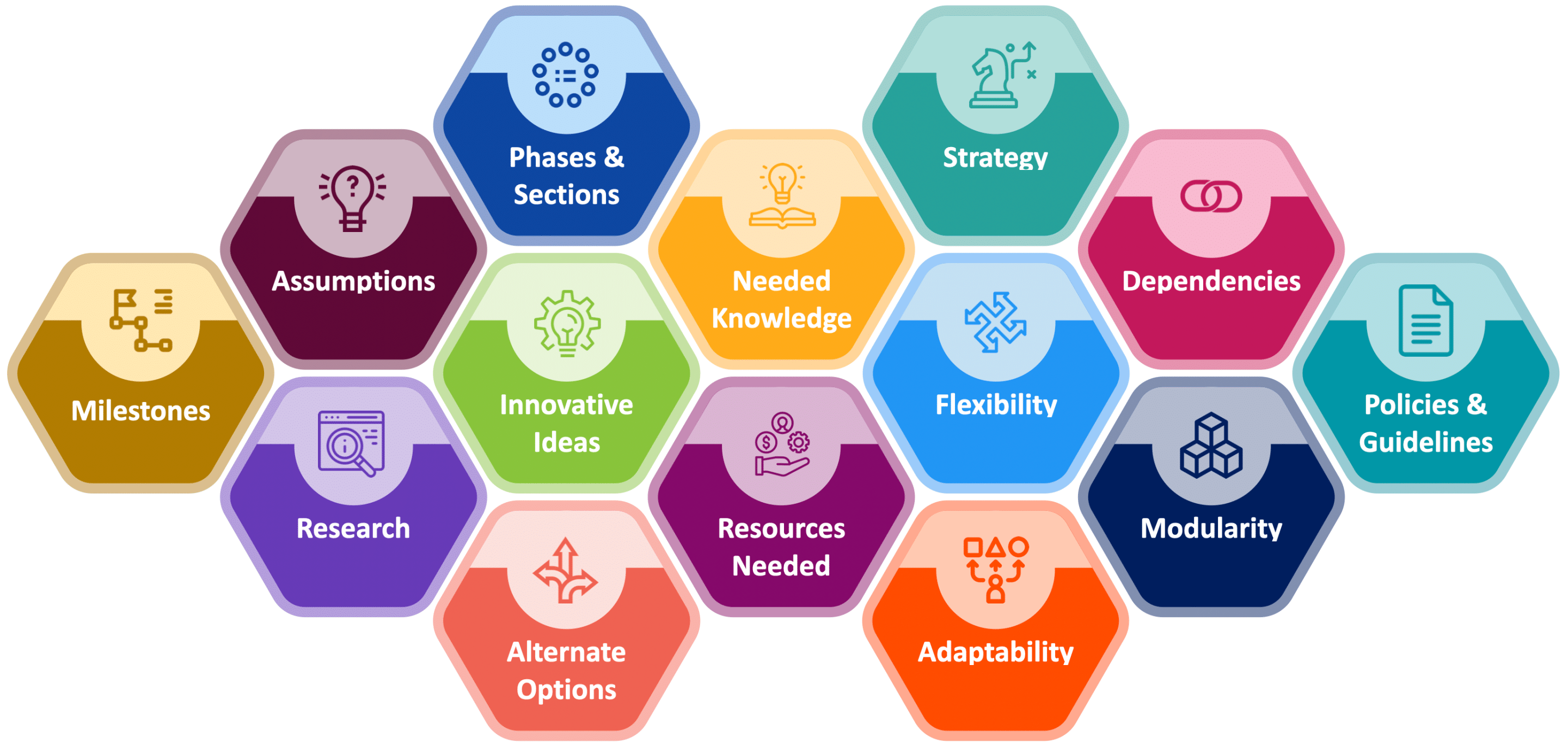
STRATEGY
A strategy is essentially your game plan. It’s the series of actions you intend to take, and the results you anticipate, that will lead you toward your end goal. It’s an overview of how you expect to move from where you are now to where you want to be.
PHASES & SECTIONS
Every grand plan starts with a single step. And then another. Before you know it, you’ve walked a thousand miles! Breaking your plan into logical groupings or phases gives your plan the modularity and structure to expand it as you may need. Once you understand the big picture, then can start zooming in to focus on the more detailed steps.
RESEARCH
Research can often be a crucial component of your personal planning process. It’s a golden opportunity to broaden your perspective, deepen your understanding, and ignite your creativity. With the right information at your fingertips, you can construct a more effective and well-rounded plan for achieving your goals.
Use the internet to investigate the areas/topics you’ll need for your plan. Identify potential challenges, and discover successful methods others have used. Determine the most promising paths you can take. Thus, you can increase your chances of reaching your destination successfully and efficiently.
Remember, knowledge is power. Armed with the right information, you can make informed decisions, avoid unnecessary setbacks, and accelerate your progress toward your goals.
ASSUMPTIONS
Assumptions in personal planning are like the invisible threads that hold the tapestry of our goals together. They are the beliefs or principles that guide our decisions, actions, and interpretations. However, they often go unexamined and unchallenged, which can lead to misconceptions or unrealistic expectations about our future.
By incorporating an assumptions element into our plan, we bring these underlying beliefs to light. This allows us to test their validity and adjust our plan accordingly. Therefore, it’s essential to ask yourself: What am I assuming to be true in this scenario? What would happen if those assumptions proved incorrect?
It’s also helpful to list your assumptions. This can be done using an app like IdeasToDone.
By making our assumptions explicit, we can mitigate risks, avoid surprises, and navigate the path toward our goals with more clarity and confidence.
RESOURCES NEEDED
It’s essential to kick off your personal planning process by identifying and taking stock of the resources you’ll need. This is a critical step that can significantly impact your potential to achieve your goals.
Everything from time, money, knowledge, skills, and support systems should be considered crucial resources. Having a clear understanding of these necessities can guide your planning and offer direction.
Failure to consider needed resources in advance can lead to roadblocks later on. Therefore, factor them into your plan from the start.
NEEDED KNOWLEDGE & TRAINING
Some of your plans may require knowledge or skills that you either don’t have or need more information on. It helps to identify those areas and include additional steps to get the information and training you need to carry out your plan.
DEPENDENCIES
When you are personal planning, it may be appropriate to consider the dependencies that may affect your journey.
These are the elements or variables that your plan relies upon or is influenced by. Mapping out dependencies in your personal plan can help you anticipate potential roadblocks and prevent unexpected delays, thus setting you up for success.
- Internal Dependencies: These are factors within your control. For instance, your skill set, your mindset, or your habits could be dependencies. If your goal is to run a marathon, a dependency could be your current fitness level or your commitment to training.
- External Dependencies: These are factors beyond your control. These can include things like resource availability, market conditions, scheduling with third parties, receiving government or association approval or even the weather. It’s essential to identify these and have contingency plans in place.
MILESTONES
Think about a road trip. Without milestones, it’s just an endless drive with no sense of progress, right? Now, apply that logic to personal planning.
By incorporating milestones into your plan, you create tangible signs of your progress. They are like checkpoints in a game, providing a sense of accomplishment and motivation each time you reach one.
Milestones can be set in various ways:
1. Time-based – such as monthly milestones or weekly milestones
2. Production-based – for example, in sales, when you hit $100,000 in sales, $200,000 in sales, etc. Or for a savings plan, when the balance hits $10,000, $20,000, $30,000, etc.
3. Percentage-based – 10% of goal, 20% of goal, etc.
4. Event-based – when a particular event or stage is completed, such as Phase 1, Phase 2, Phase 3, etc.
5. Condition-based – when you can fit into a size 12, a size 10, a size 8, etc.
6. Performance-based – when you can walk 1 mile, 2 miles, 3 miles, 5 miles, etc. or when you can run a mile in 8 minutes, 7 minutes, 6 minutes, etc.
INNOVATIVE IDEAS
When you’re crafting a personal plan, it’s not just about the obvious steps. Let’s talk innovation, baby! This is where the magic happens.
Innovation is like the secret spice in your personal planning recipe. It’s the unconventional, the unexpected, the ‘I-never-thought-of-that’ moments that can catapult you forward. So, why not sprinkle some of that innovative zest into your plan?
“Innovation distinguishes between a leader and a follower.” – Steve Jobs
Let your creative juices and ideas flow freely. Write them all down, no matter how outlandish they seem. Then, take a moment to review, refine, and include the best ones in your plan. Here’s a little secret: Innovative ideas often come from combining two seemingly unrelated things. Remember, it’s all about thinking outside the box!
And hey, don’t shy away from seeking inspiration. Look at what others have done, and how they’ve done it. There’s no shame in learning from the best.
So, go ahead, infuse your personal plan with innovative ideas. You might just surprise yourself with what you can achieve.
POLICIES & GUIDELINES
Create any policies or guidelines that you want to follow during the course of executing your plan. A diet policy might be to avoid sugar while you are on your diet. Another example might be to go to sleep no later than 10:00 PM. Policies are key rules to follow that will guide and direct you toward your goal.
MODULARITY
Think of modularity as building your plan with Lego blocks. Each block represents a part of your plan. By arranging them in a specific order, you’re building the structure of your plan. This structure is not fixed – just like Lego blocks, you can rearrange, replace, or even add new parts.
How does this help? It allows you to adapt and adjust your plan based on the changing circumstances of your life, without having to tear down the entire structure. This way, you can keep moving forward, even if one aspect of your life hits a road bump.
- Rearrange: If you realize a certain goal is more important to you now than it was before, simply move that ‘block’ up in your priority list.
- Replace: If a certain goal is no longer relevant or desirable, simply replace that ‘block’ with a new one that aligns with your current vision.
- Add: As you grow and evolve, you may discover new areas of interest or new goals. Simply add them to your structure as new ‘blocks’.
FLEXIBILITY
It’s no secret that life loves throwing curveballs. That’s why building flexibility into your personal planning is a necessity, not an option. It’s about acknowledging that plans can change and being adaptable enough to pivot when they do.
Flexibility allows you to adjust your sails when the wind changes direction. It helps you remain resilient in the face of adversity, and more importantly, it empowers you to seize unexpected opportunities that could fast-track your progress toward your goals.
Remember, a plan is a guide, not a straightjacket. Flexibility is the key to making your plan work for you, not against you.
ADAPTABILITY
Adaptability, on the other hand, is about responding effectively to change. It’s about not just accepting change, but embracing it and using it to fuel your journey towards your goals.
Even the best-laid plans can be disrupted by unexpected twists and turns. That’s why adaptability, a key ingredient in successful personal planning, should be your faithful sidekick. It’s not just about creating a plan, but developing a strategy that’s flexible enough to accommodate life’s inevitable surprises.
Being adaptable doesn’t mean abandoning your plan at the first sign of trouble. Instead, it’s about adjusting your sails to navigate the storm while keeping your destination clearly in sight. It’s this ability that enables us to turn challenges into opportunities and setbacks into stepping stones.
As the saying goes: ‘Change is the only constant’. So, embrace change, make it your friend. An adaptable plan, paired with a resilient mindset, will ensure that you’re not just surviving the winds of change, but thriving in them.
ALTERNATIVE PLANS & OPTIONS
When it comes to unlocking your potential and achieving your goals, it’s essential to consider various options and routes in your personal plan. This doesn’t imply a lack of focus, rather it opens up a world of possibilities. You’re not confined to a single path, thereby allowing room for exploration and growth.
The best-laid plans can often go awry, and it’s a sensible strategy to anticipate potential roadblocks and develop alternative pathways. This can help ensure that you stay the course, even when faced with unexpected challenges.
By incorporating these steps into your personal planning process, you’ll build resilience and flexibility into your journey towards your goals.
Remember, failure to plan is planning to fail. Equip yourself with alternative strategies to stay one step ahead.
Building Your Plan
How to Build Your Personal Plans
The main event in personal planning is building your plan. Most plans that you build might follow a similar format, but the format of other plans will vary depending on the area of focus, the complexity of the plan, the length & scope of the plan, etc. These factors will directly affect the use of the various elements described in the last section.
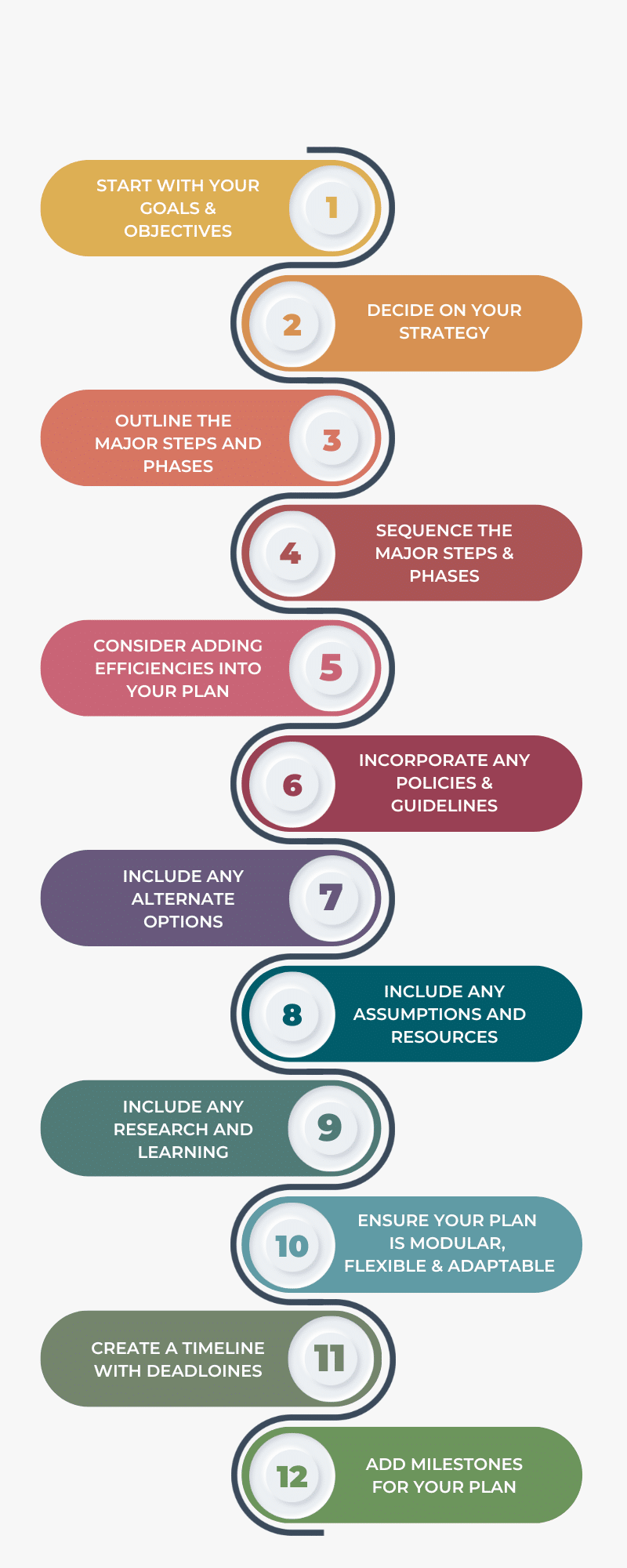
1. Start With Your Goals & Objectives
When building your plan, it is imperative that you start by setting a goal. Your goal is what you are aiming to achieve or the desired end state or scenario.
Your plan should result in the attainment of the goal.
In the words of Stephen Covey, “Begin with the end in mind.” This is your destination, the big picture. Jot down what you want to achieve and by when.
“Begin with the end in mind.” – Stephen Covey
2. Decide On Your Strategy
Incorporating a strategy section into your personal plans can be the linchpin that sets you apart from those who are struggling to make progress.
A strategy takes into consideration the various aspects involved, including but not limited to your resources, timing, strengths, and weaknesses, among others. The purpose of a strategy is to provide a clear and solid path to accomplishing your objectives while minimizing any potential obstacles.
Without this foundation, your planning efforts could effectively become aimless, disorganized, or unfocused. You are designing your compass, which will guide you through the complexities of your journey. Moreover, a well-crafted strategy forces you to consider the bigger picture, anticipate possible challenges and create contingency plans for unseen hurdles. This sets you up for success, helping you to stay proactive rather than just reactive.
3. Outline The Major Steps & Phases
Next, begin by outlining all of the major steps of your plan, along with any phases. The major steps and phases should align with your goal. You’ll have time later to fill in the detailed steps. However, if you’re on a roll, create more detailed steps while it’s at the top of your mind.
The idea is to get the major steps and phases of the plan documented and laid out to give you the overall structure of the plan.
4. Sequence The Major Steps and Phases
Now, it’s time to sequence your major steps and phases if you haven’t done this already. Place your steps in an order that makes sense and ensures efficiency. Also, identify and incorporate any dependencies into the plan as part of your sequencing. Remember, the sequence should facilitate flow, not create obstacles.
Imagine your personal plan as a symphony. The beauty lies not just in the individual notes, but in how they’re sequenced and harmonized to create a mesmerizing melody. Similarly, the effectiveness of your plan significantly depends on the proper sequencing of your phases and steps.
Why is sequencing important? Well, picture jumping into the doing phase without a strategy or a plan. You’ll likely find yourself overwhelmed, facing roadblocks, and making unnecessary errors. Conversely, a well-sequenced plan flows smoothly and efficiently, eliminating stress and promoting progress.
Sequencing is not just about what tasks you need to complete, but also about when and in what order you need to tackle them. It’s the conductor that orchestrates your plan’s symphony, leading to a successful performance.
5. Consider Adding Efficiencies Into Your Plan
As you examine the steps, consider efficiencies in using resources, tools, and assistance from others while they are available. Doing some tasks together that require the same resources can save you time.
6. Incorporate Any Policies & Guidelines
When forming your personal plan, adding an explicit set of policies and guidelines aids in maintaining commitment, focus, and clarity in your journey toward success. These are the rules you set for yourself to give you the best chance for success.
7. Include Any Alternate Options
The best-laid plans can often go awry, and it’s a sensible strategy to anticipate potential roadblocks and develop alternative pathways. This can help ensure that you stay the course, even when faced with unexpected challenges.
There are three critical steps to this process:
- Scenario Planning: Think about possible outcomes that could disrupt your plans. What could go wrong? What can you do to mitigate these risks?
- Develop Alternatives: Once you have identified potential roadblocks, brainstorm alternative strategies. These could be entirely different approaches or minor tweaks to your original plan.
- Flexibility: Keep in mind that plans are not set in stone. Be open to change as new information or opportunities present themselves.
By incorporating these steps into your personal planning process, you’ll build resilience and flexibility into your journey towards your goals.
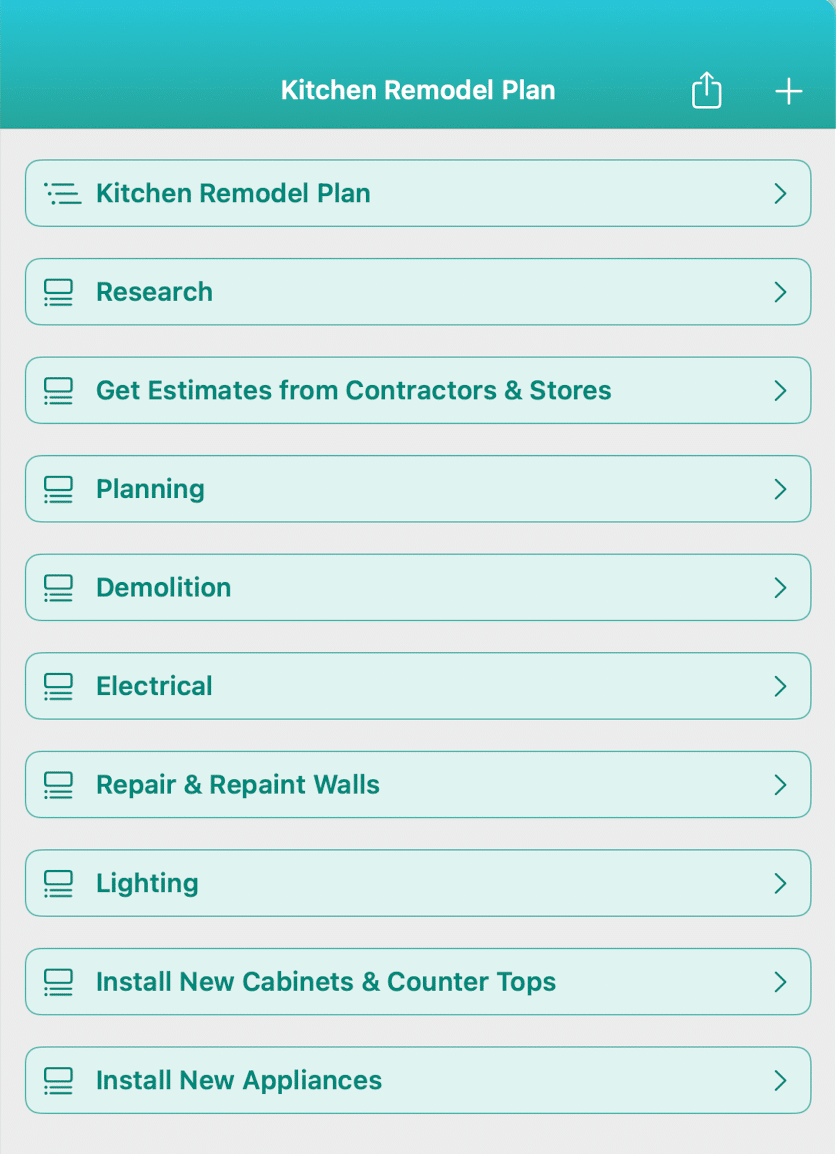
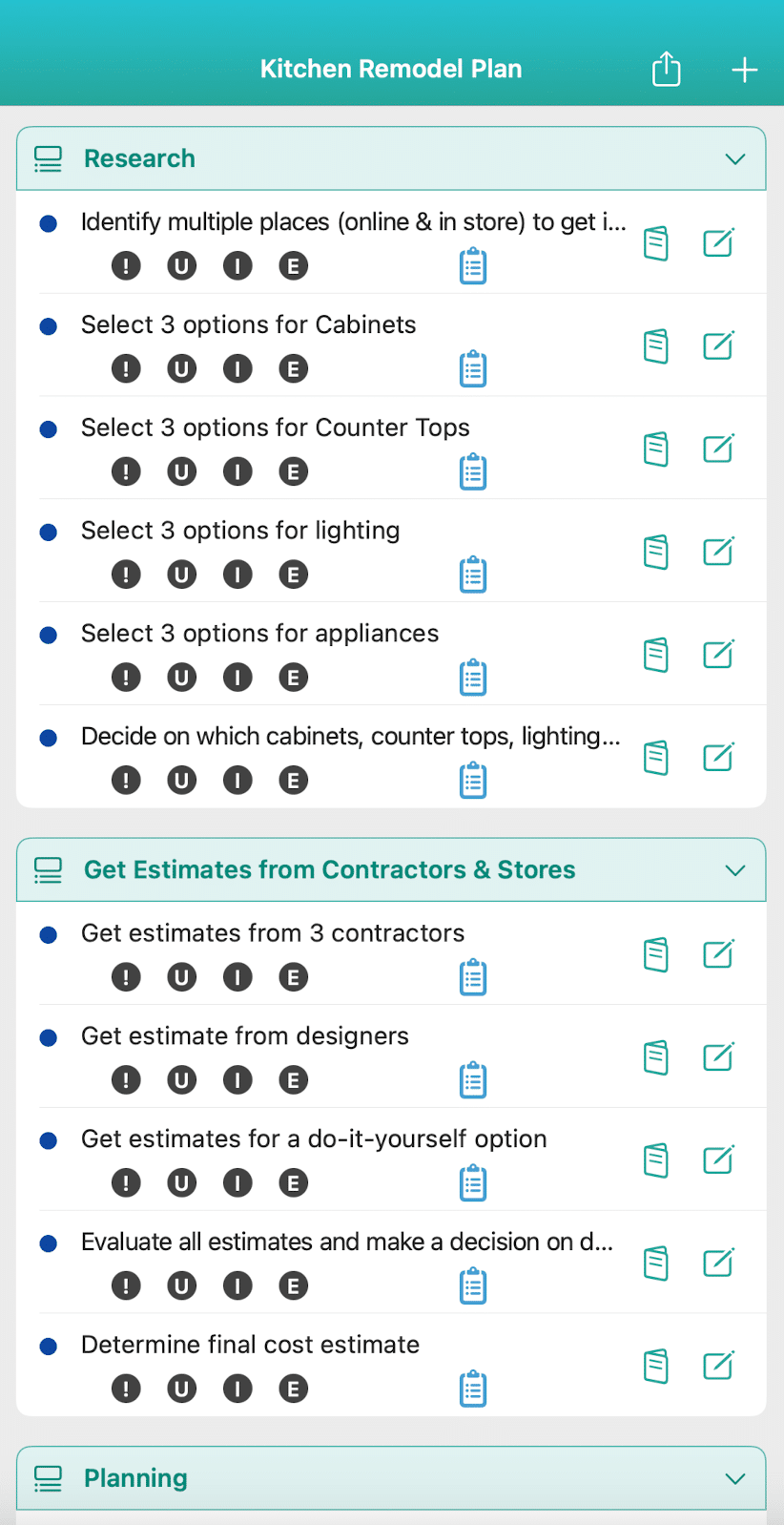
8. Include Any Assumptions & Resources Needed
Any assumptions and resources needed should be included in your plan. Your strategy section would be a good place to incorporate these.
9. Include Any Research & Learning Needed
Sometimes, certain aspects of your plan will take you into uncharted waters. Be sure to identify these areas in advance. Then, incorporate steps to do the research you need and everything you’ll need to learn to advance successfully and efficiently.
10. Ensure Your Plan is Modular, Flexible & Adaptable
It’s a good idea to make your plan modular. You can do this by grouping related steps together. You can also create sub-steps for a main step in your plan.
11. Create A Timeline With Deadlines
Mapping out a plan is pivotal, yet without a proper timeline, it’s like wandering in an unknown city without a map. Time is an essence and a palpable commodity that, if used wisely, can make your dreams a reality.
12. Create Milestones for Your Plan
Decide the specific milestones to set for your plan. Milestones break down your goal into mini-goals. Milestones are the steps that lead you to your final destination. They are more manageable, less overwhelming, and give you a sense of achievement along the way.
Remember, milestones are meant to guide and motivate, not to stress you. If things don’t go as planned, adjust your timeline accordingly.
What to see how to create plans in IdeasToDone?
The Projects View is where it’s best to create and manage your goals and plans.
You can set up a Folder for your goals, and another Folder for the plans you put together to achieve those goals.
You can get started right away by heading to the App Store and starting a 1-month, risk-free free trial!
Frequently Asked Questions
Questions you may have about Personal Planning
How can personal planning help me achieve my goals?
Personal planning is a potent tool in your journey to achieve your goals. This strategic approach allows you to clearly define your objectives, identify the necessary steps, and track your progress. By mapping out your path, it fosters focus, boosts productivity, and instills a sense of accountability, ultimately paving the way to success.
What are some effective personal planning strategies?
Effective personal planning strategies start with solid goal setting. After identifying what you want to achieve, break it down manageable tasks. Prioritize these tasks and establish a timeline for completion. Incorporate daily, weekly, and monthly reviews to track your progress and make necessary adjustments. Lastly, ensure to have a balance in all areas of your life. Strive for progress, not perfection.
How do I create a personal plan that aligns with my goals?
Creating a personal plan that aligns with your goals is all about clarity, structure, and consistency. First, clearly identify what your goals are. These should be specific, measurable, achievable, relevant, and time-bound (SMART). Next, structure your plan by breaking down each goal into smaller, actionable steps. A table can be a helpful tool for this. Finally, stay consistent. Incorporate your goals into your daily routine and continuously monitor your progress. Remember, your plan can evolve as you do, so don’t be afraid to make adjustments along the way.
What are some common obstacles to effective personal planning?
Effective personal planning, though a powerful tool in achieving goals, can often be hindered by a myriad of obstacles. Some of the most common barriers include procrastination, lack of clear objectives, fear of failure, inability to prioritize tasks effectively, and the constant interruption of unplanned events. Overcoming these obstacles requires intention and a strong purpose, resilience, and a genuine commitment to personal success.
How do I stay motivated to follow through with my personal plan?
Staying motivated is crucial when following through with your personal plan. The key is to set clear, realistic goals. To stay motivated, make sure these goals are specific, measurable, attainable, relevant, and time-based (SMART). This offers a clear path towards achievement and keeps you energized.
Another approach is to visualize your success. Imagine what it will feel like when you achieve your goals. This can provide a powerful incentive to persist and overcome challenges.
What role does goal-setting play in personal planning?
Goal-setting is the heartbeat of personal planning. It’s like the compass that points you in the direction you want to go. Without clearly defined goals, your personal planning process can feel like wandering aimlessly in a forest.
What are some common mistakes to avoid when creating a personal plan?
One common pitfall in personal planning is the failure to set clear, achievable goals. This often results in vague aspirations that can’t be measured or effectively tracked. Additionally, many individuals make the mistake of overloading their plans with too many tasks, leading to overwhelming pressure and eventual burnout. It’s crucial to balance ambition with realism.
Lastly, a common error is neglecting to factor in room for flexibility. Life is unpredictable, and your plan should be adaptable to accommodate unexpected changes.
How can personal planning help me overcome procrastination and achieve my goals?
Personal planning is your secret weapon against procrastination. It serves as a road map that guides you toward your goals. By breaking down large goals into manageable tasks, it motivates you to take action. It also helps you prioritize your tasks, ensuring that you focus your time and energy on high-value activities. Ultimately, personal planning equips you with the discipline and structure needed to overcome procrastination and make your dreams a reality.
Available on The App Store Now!
IdeasToDone Premium - $2.99 per Month or $29.99 per Year
1-Month Free Trial, Risk-Free
Download It Today!
ABOUT
DEVICE SUPPORT
FEATURES
VERSIONS
COMMUNICATION
© Productive Life Inc. 2023. All rights reserved.

